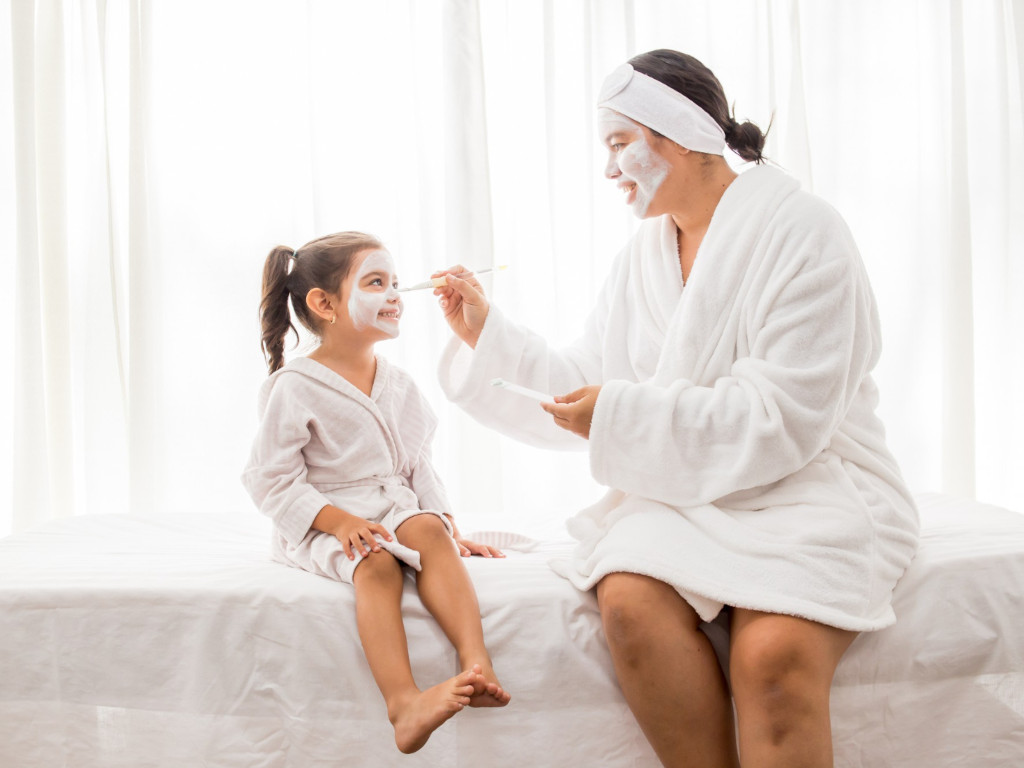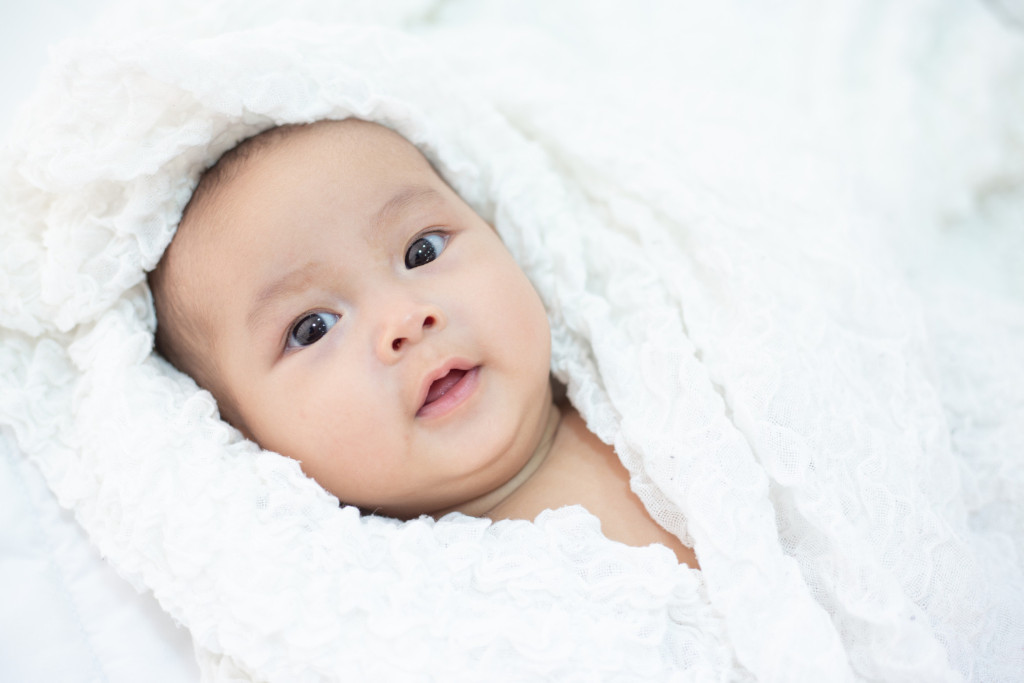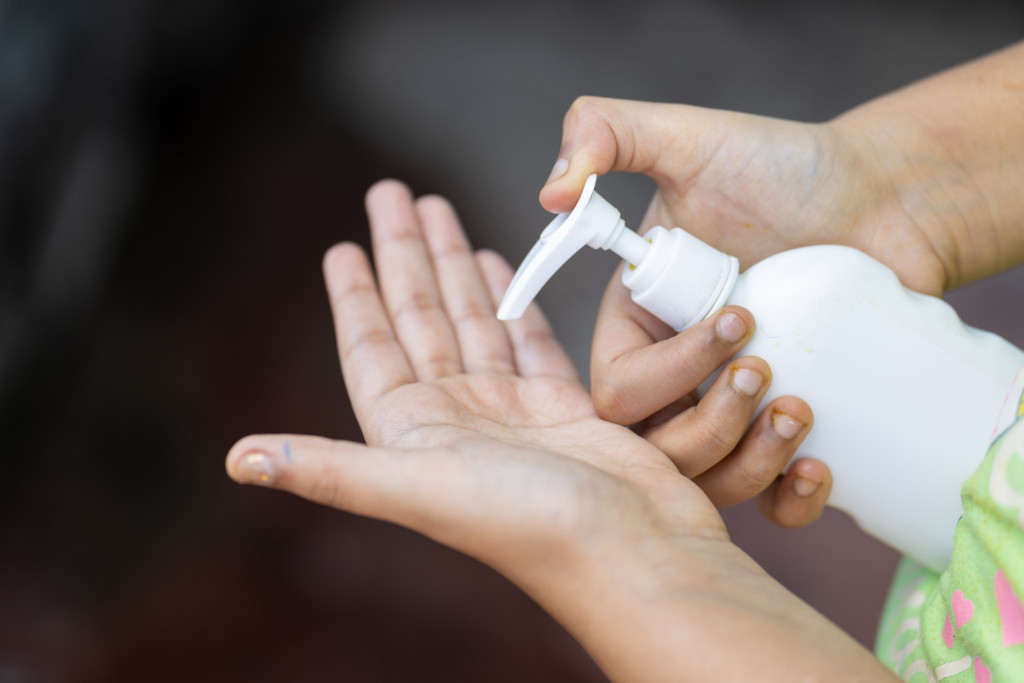SingaporeMotherhood | Baby & Toddler
June 2024
Raising Healthy Skin: A Complete Guide to Skincare for Babies, Children & Teens

Many adults spend hundreds on skincare products to fight acne and signs of ageing, or simply maintain healthy skin. But did you know that proper skincare for babies is equally important right from birth? In this guide to skincare for babies and children, we explore why it’s important to develop a suitable skincare routine, and offer best-practice tips for various stages in their young lives.
(See also: THE BEST ORGANIC AND NATURAL SKINCARE AND MAKEUP FOR PREGNANT AND BREASTFEEDING MUMS IN SINGAPORE)
Skincare for Babies from Birth to 24 Months
Healthy full-term newborn skin is well-developed and functional at birth, with a thick epidermis. Hence water loss through the skin at birth is equal to, or lower than adults, indicating a highly effective skin barrier.
However, premature infants, particularly those with very low birth weight, have a thin and poor skin barrier. The skin of premies requires additional attention in the first month, because their skin is most susceptible to infection during this time.

Babies are also born with vernix, a protective coating that forms on baby’s skin in-utero. This protects the epidermis from water exposure and contains antimicrobial agents that prevent common fungal and bacterial infections. They begin to lose the vernix after birth, so newborn skin becomes significantly drier and often results in peeling.
Babies’ skin is very delicate and especially sensitive to chemical, physical, and microbial influences. Substances that come into contact with baby skin absorb more easily and penetrate into deeper skin layers. Common causes of skin irritation include surfactants in soaps and detergents, prolonged diaper use, viral infections, and our hot weather.
(See also: 10 THINGS TO DO AFTER YOUR BABY IS BORN)
Tips on Caring for Your Baby’s Skin:
- Identify any dirt or grime that your baby acquires on the face and body throughout the day. Wash with a gentle cleanser, then pat dry those areas. If on the go, use either fresh, gentle washcloths or fragrance-free hypoallergenic wipes.
- Moisturise with a colloidal oat body lotion. Studies show that 1 per cent colloidal oatmeal-based emollients strengthen skin’s moisture barrier while helping to relieve minor irritation and itching due to skin dryness.
- Use natural cloth mitts over your baby’s hands to prevent scratching in addition to keeping nails trimmed short.
- Minimise your baby’s exposure to the sun and ensure sufficient protection via shade and clothing. Their delicate skin is particularly susceptible to damaging UV rays. You can introduce sunscreen when baby is six months old.
Skincare for Children from 2 to 11 Years
As the skin develops within a child’s formative years, continual changes it undergoes can leave it vulnerable. During this time, factors such as diet, sun exposure, environmental stressors, and genetics can contribute to skin issues. Some notable skin conditions include ringworm, viral warts, bacterial infections, prickly heat, and eczema.

Treatments vary from anti-itch creams to pain relievers and antibiotics, depending on the condition. A weak skin barrier will make your child’s skin more sensitive and prone to dryness and infections. Managing your child’s symptoms is the goal of treatment.
Awareness on how best to care for your child’s growing skin is key. With this insight, you can then build a safe and effective skincare routine for their formative years. It will also be easier for older children to continue practising good skincare habits that are already part of their everyday routine.
(See also: 8 COMMON BABY & CHILD SKIN PROBLEMS)
Tips on Looking after Your Young Child’s Skin:
- Keep harsh chemicals away from your child’s skin. Select fragrance-free products or those with natural fragrances such as essential oils.
- Use a mild, gentle cleanser to remove oils, dirt and bacteria. Also keep shower time short and sweet to prevent drying out skin.
- Opt for a moisturiser that is lightweight and non-greasy that provides hydration while not clogging pores.
- If your child has sensitive skin, shop for pure cotton fabrics. Avoid synthetic fibres such as spandex, polyester, and nylons. Also choose your laundry detergent carefully.
- Continue to instil good sun protection habits. Limit sun exposure, especially during midday, whenever possible. Always use a sunscreen with SPF 30 or higher, and remember to reapply it regularly.
Skincare for Adolescents from 11 to 14 Years
As your child moves into their teens and navigates the exciting journey of self-discovery, their skincare needs also change. Acne is by far the most common offender at this stage, no thanks to puberty, of course.

For most adolescents, a basic skincare regimen — cleanse, moisturise, and apply sun protection — suffices. Use a gentle foaming cleanser or non-oily gel cleanser to remove sebum, sweat, dirt, makeup, and pollutants. Water-based cleansers with mild actives like (maximum of 2 per cent) salicylic acid or benzoyl peroxide may help treat acne. Follow up with a lightweight moisturiser containing protective antioxidants.
It is important that teens avoid using products which contain harsh actives. These are typically overkill for young skin and can destabilise their skin structure and potentially cause congested skin. Also bear in mind not to use a combination of actives. For example, using more than one alpha hydroxy acid (like glycolic acid and mandelic acid) at a time can increase the risk of skin irritation and sensitivity. If in doubt, please contact a dermatologist.
Your teenager may look to social media for information about their skincare routine. However, misinformation is also rife. Point them towards credible sources, like this one, that share science-based information on beneficial skincare ingredients and practices.
Keep these strategies in mind as you support your teen through this confusing stage of life. You’ll also be helping them feel happier and more confident, while building lifelong habits that promote good skin health.
(See also: HOW TO TALK TO YOUR CHILD ABOUT ONLINE SAFETY BECAUSE YOUR CHILD WILL ENCOUNTER INAPPROPRIATE CONTENT ONLINE)
Tips on Managing Your Adolescent’s Skin:
- Opt for a slow and steady approach to using new skincare products. While some ingredients won’t hurt the skin of teens, over-enthusiastic product experimentation might cause increased sensitivity. This can lead to contact dermatitis, allergic dermatitis, and acne.
- Instil habits in your child to keep to a simple skincare routine, and not blindly follow skincare trends. Look for trusted brands that are backed by data and science.
- If your teen has oily skin, look for products that contain clay. This carries natural antiseptic and astringent properties to help unclog pores due to hormonal changes.
- Don’t cut out moisturisers from the skincare equation even if it feels counterproductive. Hydration is extra important to keep teenage skin supple and smooth.
- While some sun exposure is essential for boosting vitamin D, counterbalancing this with high-factor sunscreen is essential. Broad-spectrum sunscreens with SPF 30 to SPF 50 are advisable, with regular application through the day.
Giving Atopic Dermatitis (Eczema) the Attention It Demands

While most childhood skin conditions are short-lived and clear up over time, atopic dermatitis (AD) can recur after months or even years. Commonly called eczema, AD is a chronic inflammatory skin disorder that usually begins in infancy from three months and above.
The 2022 Global Report on AD estimates that out of a staggering 223 million people living with AD worldwide, 43 million are children between the ages of one and four. In Singapore alone, about 20 per cent of children suffer from AD — that’s one in five! And that’s why we’re dedicating the final section in this guide to the itchy condition.
AD is also often hereditary. But thankfully, for parents with AD and a newborn, there is hope. In a recent study, researchers found that a twice daily application of an emollient containing colloidal oats and glycerin in the first eight weeks after birth resulted in a greater abundance of skin-beneficial microflora. This positive effect was also lasting, translating into a lower risk of developing eczema at ages 6 and 12 months.
(See also: CARING FOR YOUR CHILD’S SKIN AND MANAGING ECZEMA)
Tips on Treating Skin with Atopic Dermatitis:
- Maintain a daily skincare routine and stick with products that are working for your baby in preventing flare-ups. For example, a regular colloidal oatmeal bath may be both a relaxing and effective method of providing continued relief.
- Keep a pocket-sized diary to track your little one’s exposure to potential irritants. Uncovering specific triggers and eliminating them is a key step in eczema treatment.
- For children with compromised skin barrier or eczema, daily emollient use is essential to maintain skin hydration and reduce water loss due to the dysfunction of the epidermal barrier (outermost layer of skin).
- Maintain a short shower routine (avoid prolonged soaking in hot water) to prevent dehydrating the skin. Afterwards, pat dry gently with a clean towel and apply any prescribed topical eczema medication. Finally, slather on a suitable moisturiser right away to lock the moisture in.
Our skin is our first form of barrier against the environment and children’s skin has unique needs. By implementing a skincare routine to suit, your little one can benefit from a head start in building long-lasting and positive habits in caring for their skin’s needs.
 | Expert Resource Ian Charlton began his career as a scientist in 1999 and has worked on numerous iconic skin and personal care brands in Asia. Currently, as Head of Essential Health R&D Asia Pacific, Kenvue, Ian leads a team of scientists in the development of new innovations for Aveeno, Neutrogena, Johnsons, and Aveeno Baby. |
Featured image: wirestock
All content from this article, including images, cannot be reproduced without credits or written permission from SingaporeMotherhood.
Follow us on Facebook, Instagram, and Telegram for the latest article and promotion updates.





